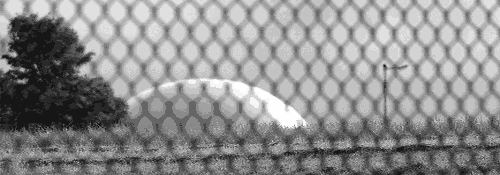US Bases around the world
Croughtonwatch
Croughtonwatch is a website devoted to USAF/RAF Croughton (and Barford St. John), the USA’s communications and surveillance base on the border of Oxfordshire and Northamptonshire. Croughton is part of a global system of electronic communications, control and surveillance that works on behalf of the US military and intelligence establishment; in turn it is an active part of both US foreign policy, the military projection of American power across Europe and the Middle East – and as part that, the increasing use of electronic surveillance and unmanned weapons systems (aka. ‘drones’). The site brings together information about what Croughton is/does, those working to highlight its role in conflict and the use of advanced surveillance and weapons technology, and recent reports/articles which highlight the role of Croughton.www.fraw.org.uk/croughtonwatch/index.shtml
US Empire of Bases Grows
AntiWar.com – by David Vine and Tom Engelhardt – July 16, 2012
It was Jan. 15, 2004, and TomDispatch had only been in existence for a year when Chalmers Johnson, author of the prophetic book Blowback (published in 2000 and a bestseller after the 9/11 attacks), did a piece for this site titled “America’s Empire of Bases.” He wrote then: “Due to government secrecy, our citizens are often ignorant of the fact that our garrisons encircle the planet. This vast network of American bases on every continent except Antarctica actually constitutes a new form of empire — an empire of bases with its own geography not likely to be taught in any high school geography class. Without grasping the dimensions of this globe-girdling Baseworld, one can’t begin to understand the size and nature of our imperial aspirations or the degree to which a new kind of militarism is undermining our constitutional order.”
It was a benchmark essay for TomDispatch and a theme — the unprecedented way Washington was garrisoning the planet — that Johnson would return to repeatedly and that others of us would take up. This mattered because, despite the crucial role that Washington’s empire of bases played in the American way of war and its dreams of global dominance, bases were then, and remain today, a phenomenon largely ignored in the mainstream media.
In 2004, the Pentagon was, for instance, already building the first of its 505 bases, the biggest among them meant to be “enduring,” in Iraq — American ziggurats, I called them at the time. Some of these were large enough to qualify as full-scale American towns, with PXs, fire departments, bus routes, the usual range of fast-food joints, Internet cafes, and the like — and yet it was the rare American reporter who saw a story of any sort in them, even when visiting one of them. The same was true in Afghanistan, where the U.S. was building (and is still upgrading) 400 or more bases. …
Read on: http://original.antiwar.com/engelhardt/2012/07/15/us-empire-of-bases-grows/
US Department of Defense
BASE STRUCTURE REPORT for the fiscal year 2011
A Summary of DoD’s Real Property Inventory:
Read here: www.acq.osd.mil/ie/download/bsr/bsr2011baseline.pdf
Guam: Self-Determination, or More U.S. Troops?
Robert Naiman, Just Foreign Policy, June 17, 2010
Usually, when someone refers to a place as a “U.S. colony,” they are making an analogy, suggesting that U.S. influence somewhere is so strong, and the indigenous residents of the place have so little effective say over key decisions, that it’s as if the place were a formal U.S. colony.
But, remarkably, and perhaps predictably, for a country whose leaders, editorialists and pundits constantly pontificate about how we are an indispensable force for freedom in the world, we rarely discuss the fact that there are places in the world that are actual U.S. colonies. Still less do we consider whether we are complying with our international obligations to respect the right of self-determination for colonized peoples, and if we are not, what we could do to change that. …
The Mariana Islands comprise two political entities, the territory of Guam and the Commonwealth of the Northern Mariana Islands. Guam was ceded to the U.S. by Spain in 1898 after Spain’s defeat in the Spanish-American war, while the Northern Mariana Islands were conquered by the U.S. from Japan in World War II. As political entities, the two have several features in common: while they are ruled by Washington, and their residents are U.S. citizens, many of whom serve in the U.S. military, they have no vote in Presidential elections, nor do they have a representative in Congress who can vote on the passage of legislation.
In other words: they are U.S. colonies.
Guam, in particular, is facing a major decision about its destiny, a decision made in Washington about which its indigenous population has not yet had any effective say. The United States is currently planning to relocate 8,000 Marines and 9,000 dependents to Guam by 2014. With an expected influx of foreign workers recruited for military construction projects, Guam’s population is expected to increase by some 80,000 people by 2014, a 45% increase from its current estimated population of 180,000.
More than a quarter of the island is already owned by the U.S. military, the Washington Post noted in March, while a quarter of the island’s population lives below the U.S. poverty level.
As the Post noted, Guam was not consulted in the decision to move 8,000 Marines to the island and has no legal means to block it. Yet an Environmental Protection Agency analysis said the U.S. military buildup could trigger island-wide water shortages.
The possibility that Guam’s indigenous residents may suffer irreparable harm from this planned military buildup without ever having had any effective say about it heightens the responsibility of Americans who do have voting representation in Washington to know something about the military buildup and its historical background. …
www.huffingtonpost.com/robert-naiman/guam-self-determination-o_b_614688.html

